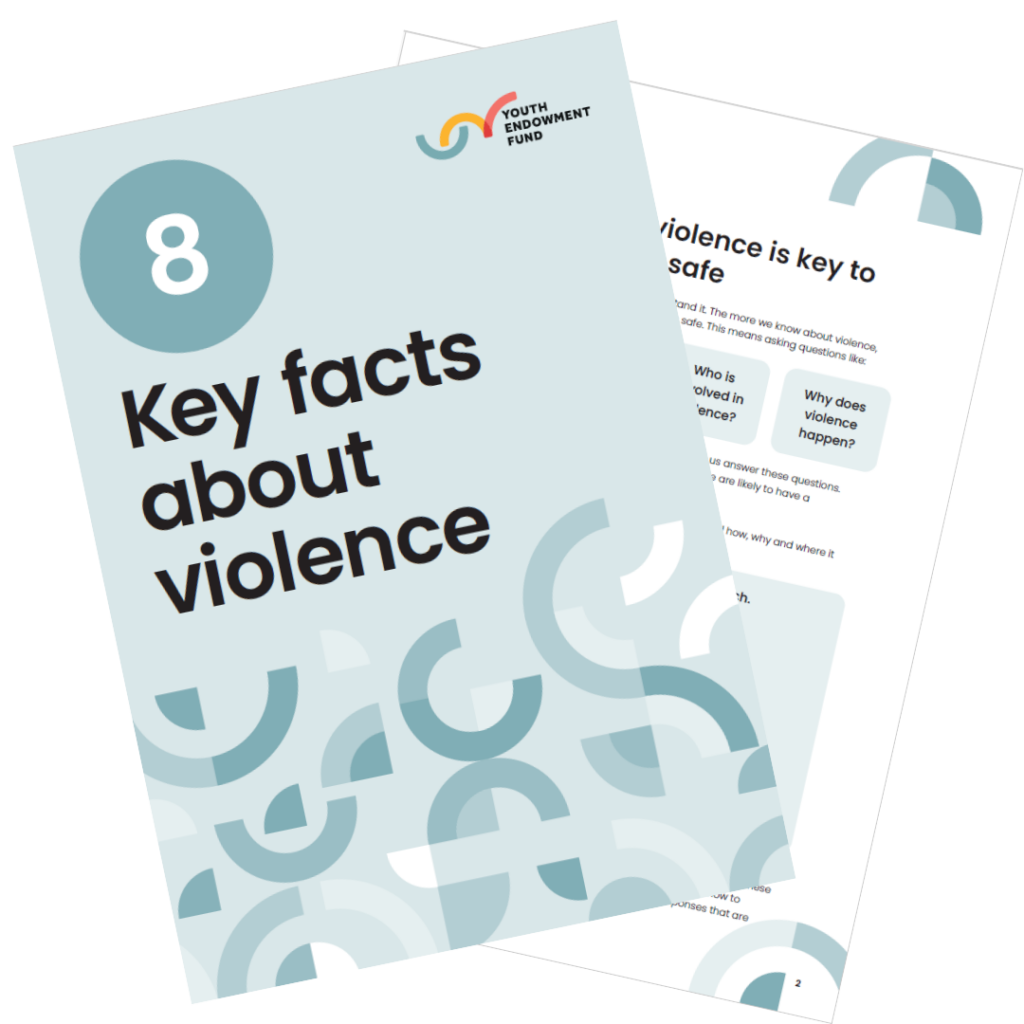
Key Facts About Violence

Crime and violence tend to happen in certain locations more often than others.
These locations are called ‘hotspots’. An analysis of data in England and Wales found that 50% of violent crime happens in just 2% of street segments. In London, nearly 70% of knife-related homicides happen within just 1% of small geographic areas. This is backed up by a recent review of international research which found that, on average, 50% of crime happens in just 4.5% of streets. These locations can be very small, such as a bus station, school route, or section of a park or street.
There are several reasons why hotspots might form.
Resources are limited and the police and social services can’t be everywhere all the time. It makes sense to focus activities and resources on the places where violence is most common.
In policing, this approach is called hotspots policing. There is good evidence that hotspots policing can prevent crime and violence. The YEF Toolkit estimates that, on average, it has had a moderate impact on reducing violent crime. It also found slightly largely impacts when the police took a ‘problem-oriented’ approach, which understands and addresses the root causes of violence. You can read more about this evidence in the below Toolkit summary.
Of course, it’s not just policing that can benefit from thinking about hotspots. There is evidence that other local services and community-led efforts can address violence hotspots by understanding why they exist and taking a thoughtful response to making them safe (see the expert insight below).

“We launched a new hotspots initiative about two years ago. Looking at where and when violence happens in Leicester, there’s a mid-afternoon peak and a night time economy peak. I was really struck by how the hotspots in the mid-afternoon peak are full of vulnerability. There’s drugs being taken and sold, alcohol issues and vulnerable children being attracted to those spaces.
“Policing can only do so much in these situations. If we speak to children about why they are in those spaces, we don’t get the full story. If we try to involve them in more positive activities, it can be hard to get engagement. It just felt like we’re not getting underneath it all.
“We decided to partner with another organisation from outside policing who bring different skills and could provide a different form of support. We began working with a local social care and health provider, Turning Point, to run a street outreach service focused on the violent hotspots. The outreach staff are really credible and skilled at what they do. They are much more able to engage and understand what’s driving the violence, be a consistent presence and build up relationships over time, and help people access support when they need it.”
You can read a more detailed summary of this project on the College of Policing website.
Get your copy of our latest research resource on the key facts about violence.

